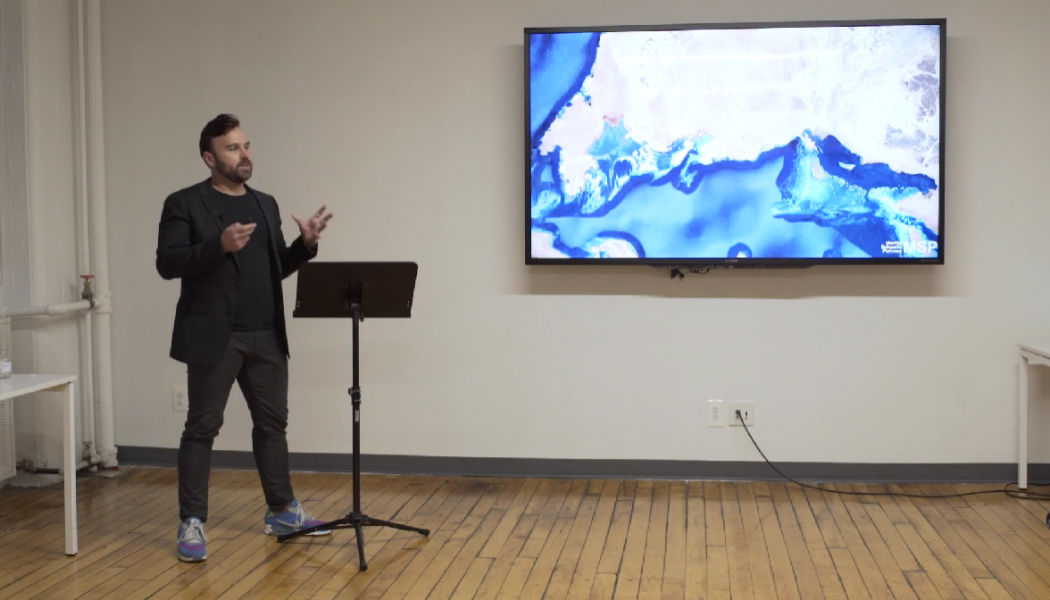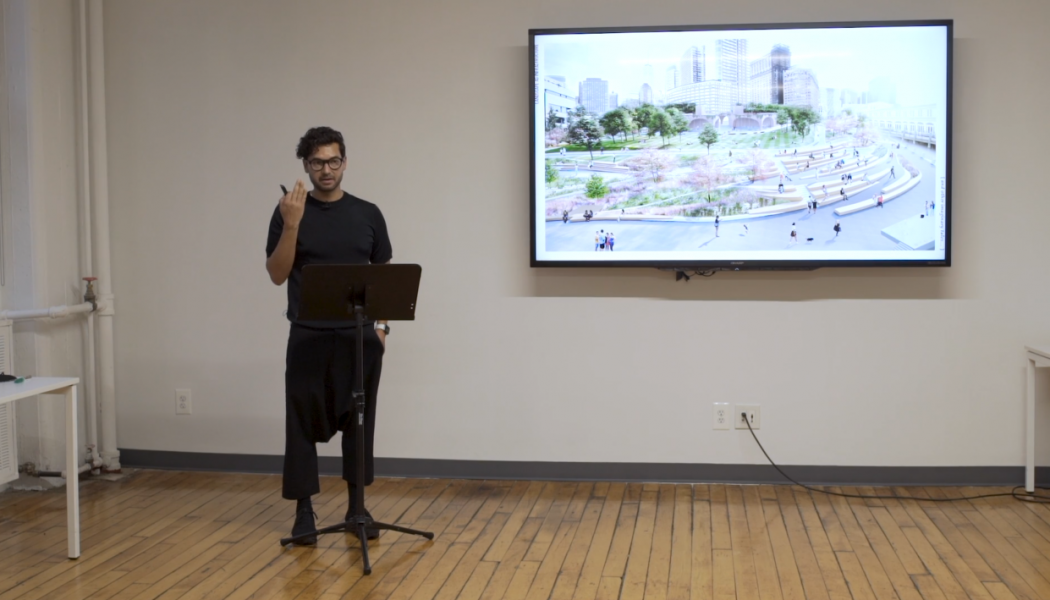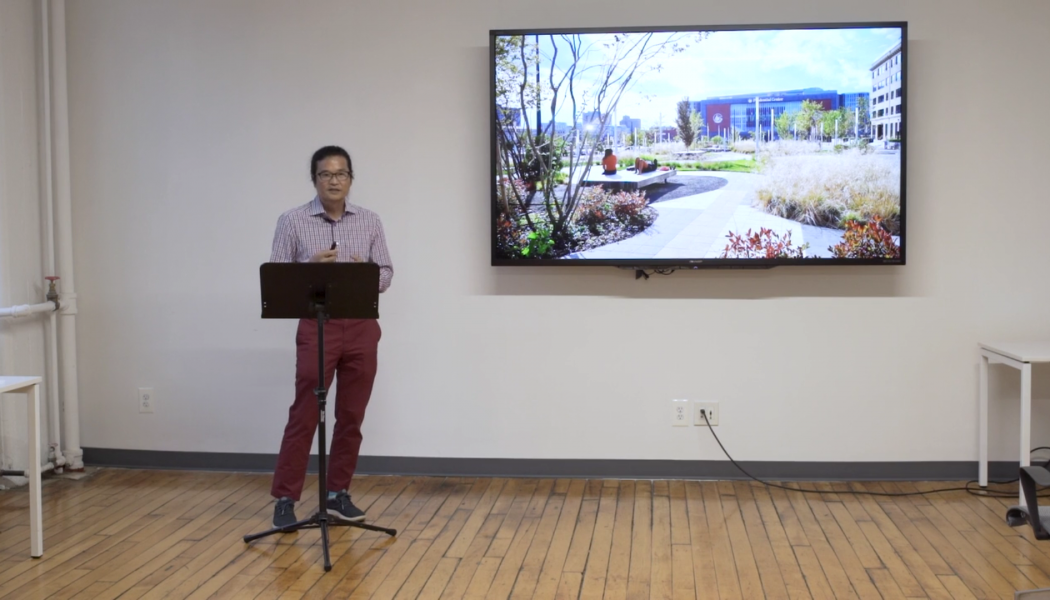land8x8
Colorado Brightfields [Video]
Scott Carman is an assistant professor of landscape architecture and urban design at Colorado State University. He joined the Land8x8 Lightning Talks to speak about his recent research and advocacy project, the Colorado Brightfields Initiative. The research project began in 2018 after Governor Jared Polis, aimed to set the state of Colorado on a path to 100% renewable energy generation by 2040. The term “brightfield” was coined in 2012 by the EPA to describe contaminated or disturbed sites, such as brownfields, with the potential to be converted for renewable energy generation. One example can be seen as photovoltaic panels harvest solar energy over the former Hickory Ridge Landfill in Conley, Georgia. Because of the large land areas needed for renewable energy farms, land use...Read More
Next Generation Playscapes! [Video]
Sara Bonacquist is a landscape architect at Design Workshop in Denver. As a landscape architect, she understands the importance of playgrounds and outdoor play environments for children. These are critical spaces where kids experiment, find joy, express creativity, collaborate with other kids, and find community. At the Land8x8 Lightning Talks, Sara noted the responsibility and influence landscape architects have over the outdoor spaces that shape the next generation of play. “We have come a long way, but the fundamental play theories discussed are the same. We need to design mentally and physically challenging places, based in specific places/contexts, that are safe, but still fun, and accessible to everyone.” Sara recounts some of the earliest play theories: The earliest American and Eur...Read More
Shifting Paradigms: Collaboration in Practice [Video]
At the Land8x8 Lightning Talks in Denver, CO, Founder + Principal of Studio Siembra, Magdalena (Maggie) Aravena, offered insight into how the practice of landscape architecture can be transformed by new models of collaboration. A first-generation Chilean, her service and practice have always revolved around people. “Siembra,” her firm name, stems from the Spanish word “to sow” – “Sowing seeds of optimism, resilience, and beauty is what we’re doing, or what we should be doing with practice.” Recognized as ASLA’s 2021 recipient of the Emerging Professional Medal, Magdalena is an admired professional within the Landscape Architecture community. With seven years of previous landscape architecture experience, Maggie knew there was potential to think outside of the box when it came to the futur...Read More
Landscape Architecture + Climate Action [Video]
During the Land8x8 Lightning Talks in Denver, Torey Carter-Conneen, the CEO of the American Society of Landscape Architects (ASLA), joined seven other speakers to kick-off this set of talks centered around the theme, “Next Practices in Landscape Architecture”. He began with a question that landscape architects get asked regularly while interacting with the public: “What is Landscape Architecture?” As the leader of the largest national membership organization for landscape architects, Torey routinely introduces the profession to people who may or may not know what landscape architecture is. Simply put, landscape architects utilize a unique combination of skills: design, art, and science, according to Torey. From the intentionality of pathway materials, spacing of trees, or the direction of ...Read More
Giving Back [Video]
Anchalee (Annie) Phaosawasdi of Hargreaves Jones used the platform of the Land8x8 Lightning Talks to share her experiences giving back to her community as a landscape architect and challenges the profession to create time to do so as well. While most of the projects that landscape architects serve their communities and neighborhoods, they are not always as rewarding as the larger-scale projects that are “saving the planet” or projects that are immediately rewarding. Annie shares ways that she and her colleagues engage the community to give back and increase awareness and diversity of the profession. One such program was Gear-Up by the New York Botanical Garden that targets high school and first year college students to learn about the environment, program and projects of the Bo...Read More
Toward a Patchwork Ecology [Video]
“Space” in landscape architecture typically conjures up images of the horizontal plane: a canvas, sometimes blank, upon which designs may proliferate. In urban areas, greenspaces necessarily punctuate the vast expanse of hardscape as they manifest ideas of seclusion and refuge. But what about liminal space, or areas created by the in-between of the architectural world? How about the flora that grows independently, or without human intervention, in these areas? To David Seiter, Founder and Design Director at Future Green Studio, weaving landscape into the architectural environment through perhaps unconventional methods is the focus of his work as he explains at the Land8x8 Lightning Talks. Founded in 2008, Future Green is a design-build firm that began in New York City and now services urba...Read More
The Tao of Woke Practice [Video]
The modern design process has been formulated and repeated for decades in the landscape architecture profession. Oftentimes, it is this procedure- almost an institutionalized method of creation- that ends up disserving the same communities one vows to protect and uplift. Since 1994, Elizabeth Kennedy, PLA and Principal of Elizabeth Kennedy Landscape Architects (EKLA), has been leading by example in how she and her team show up and make space for clients and each other. In the months following the death of George Floyd, Kennedy participated in nearly thirty juries and presentations to share her expertise in empathetic community engagement and landscape architectural practice as it pertains to African American communities and beyond. Kennedy highlights EKLA’s project of Weeksville, New York,...Read More
Fill for Habitat [Video]
New York City’s landscape has much to offer. From its soaring skyscrapers to its vast and unique parks system, the fact that water plays a significant geographical and historical role perhaps falls to the wayside. There is a structural reasoning- even with over 520 miles of city shoreline, most is what’s considered “hard”. Bulkheads and concrete walls create a stark divide between people and the water they live on all the while diminishing critical habitat. The importance of water does not go unnoticed to Brad Howe, PLA and Senior Associate at SCAPE. In fact, it is central to what they do. “The frequency which with we experience water and its capability of destruction is only increasing,” Howe states as he describes the hard edge’s role in poor stormwater infrastructure. Further, its these...Read More
Designing for Decarbonization [Video]
2022 has been a year in which we are reminded in headline after headline that climate change is, in fact, not a problem to prepare for but a present and dire force to be reckoned with. The effects of increasingly frequent natural disasters and extreme temperature shifts are global issues that require innovative and imaginative solutions. Fortunately, the end is not nigh, as those same headlines are coupled with the groundbreaking news of climate capturing technologies and an increased awareness of what, exactly, our natural world is capable of. At the Land8x8 Lightning Talks, Matthew Gindlesperger, PLA and Associate at Martha Schwartz Partners (MSP), sees the potential of these climate resiliency technologies to play a substantial role in the practice of landscape architecture. “[We are] t...Read More
Adaptive Landscape Master Planning [Video]
How can we better prepare for the future unknown? Martha Desbiens, Associate at MNLA, recounts how the last few years brought radical change and emphatic proactivity to the heart of her work at the Land8x8 Lightning Talks. Desbiens reflects on how much landscape architects have improved communication skills between colleagues, clients, and communities alike during the COVID-19 pandemic. The voice landscape architects have forged in the public discourse, especially around social issues and the climate catastrophe, has been massively impactful, but “largely reactive”. Looking towards the future, landscape architects must shift communication and action to proactive, adaptive design choices and communication efforts. To provide precedent, Desbiens details how MNLA’s Smith College “20-Year Visi...Read More
Landscape as Infrastructure and Other Imaginary Tales [Video]
When it comes to resiliency infrastructure, machine-like futures seem to lie ahead for our shorelines. As sea level rise threatens our coastal communities, projects are typically driven by the works of engineers in order to create the mechanical layer of protection cities and neighborhoods need. It may seem as if landscape as infrastructure is an imaginary tale, but according to Gonzalo Cruz, Studio Design Principal, it is the core of what he and the landscape architecture team do at AECOM New York. “There’s a lot of made-up stuff that we think through… that actually becomes realized” Cruz states in reference to the firm’s projects at the Land8x8 Lightning Talks. Driven by engineering, the team is juxtaposed to design a landscape in which the technical infrastructure necessary for resilien...Read More
Grounding Stories in Place [Video]
Taewook Cha, founding principal and landscape architect of Supermass Studio, discusses how stories in the landscape are the key to professional excellence at the Land8x8 Lightning Talks. With 25 years of experience, Cha notes how landscape architects often use phrases and terms that seem like vaguely grand yet promising gestures. “Urban Life Forms” and “Exemplary Environments” seem like shining examples of design integrity but lack clear meaning and impact. Thus, the outlook of landscape architecture may not fall in the pinpointing of the terms that buzz the community. “There were times where we believed the future of landscape architecture depended on our ability to conceptualize and theorize abstract words, but the future relies on our ability to relay people’s stories through the landsc...Read More



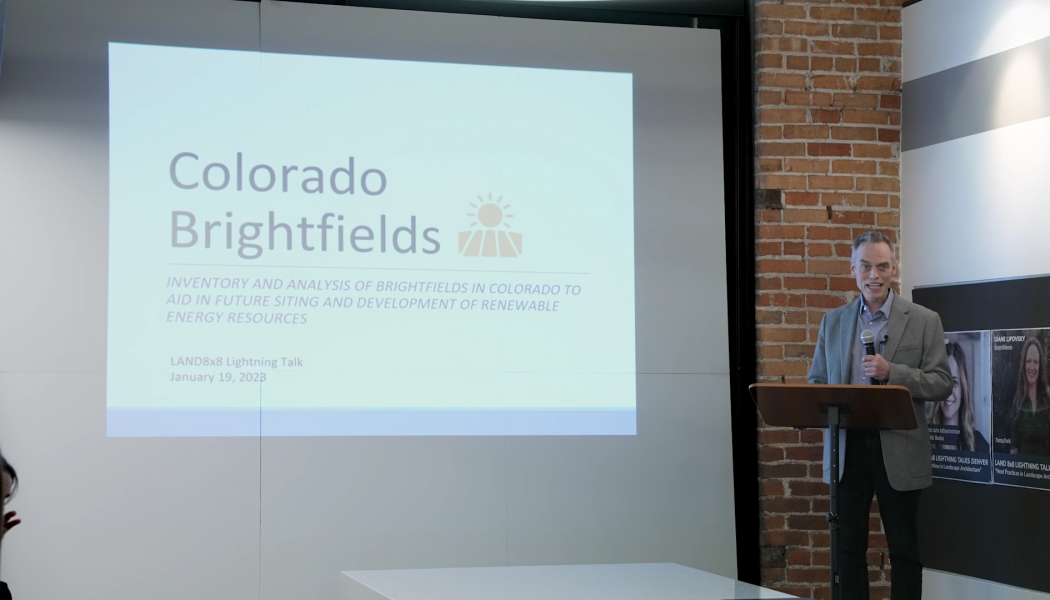

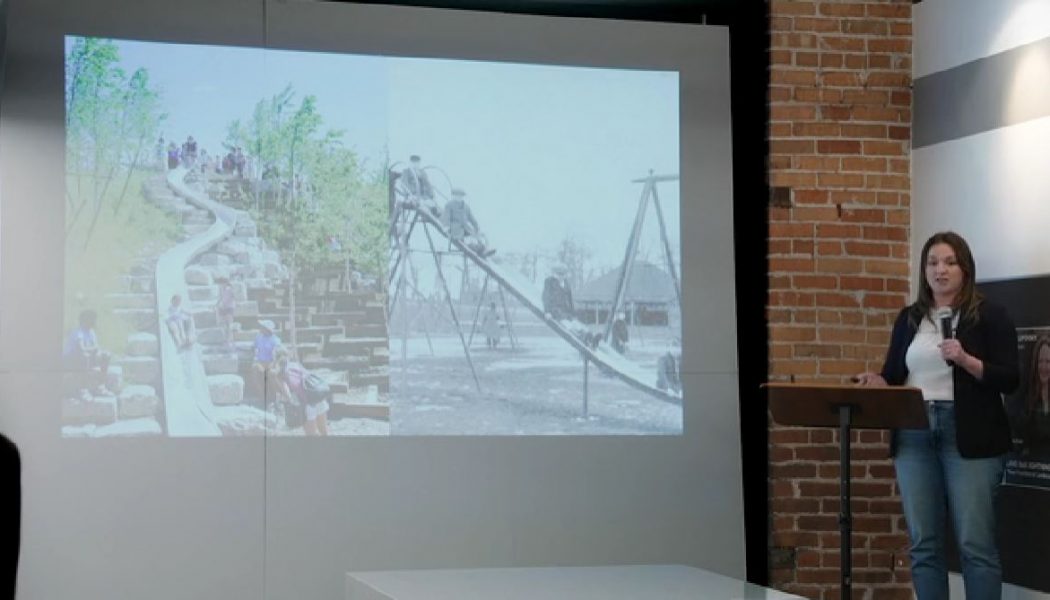

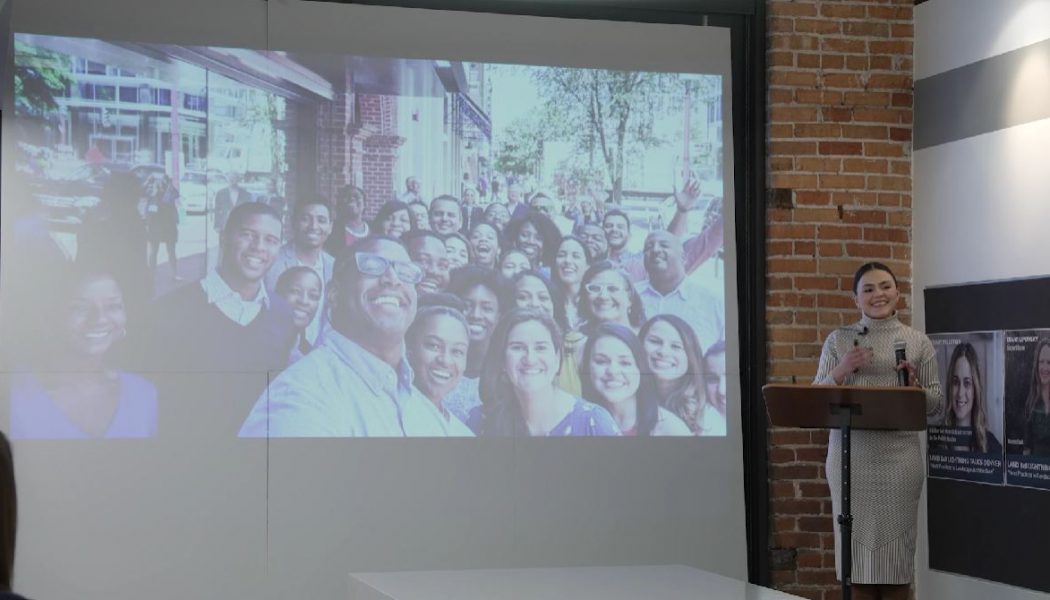

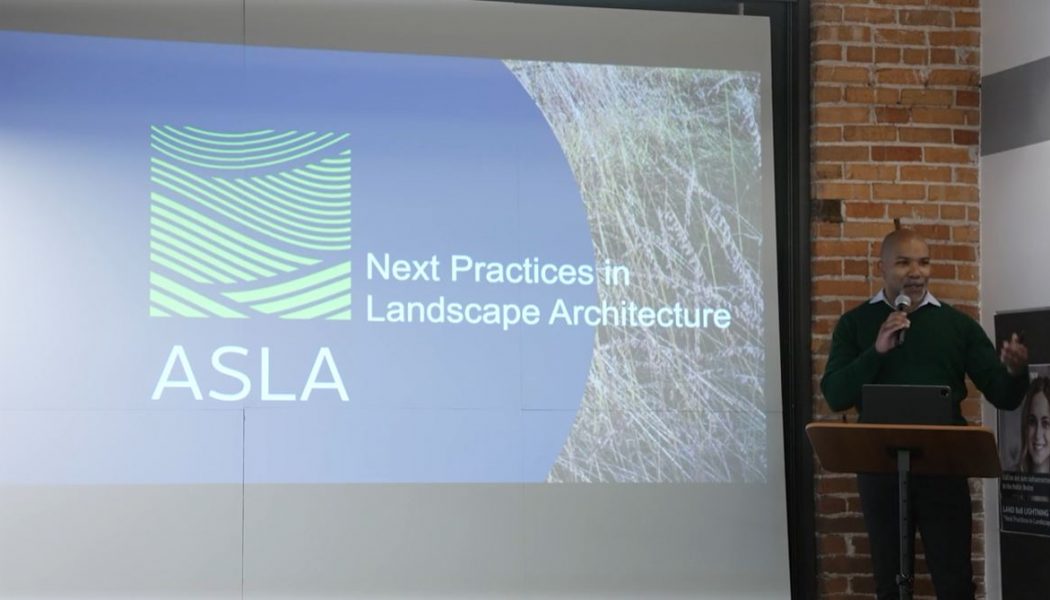

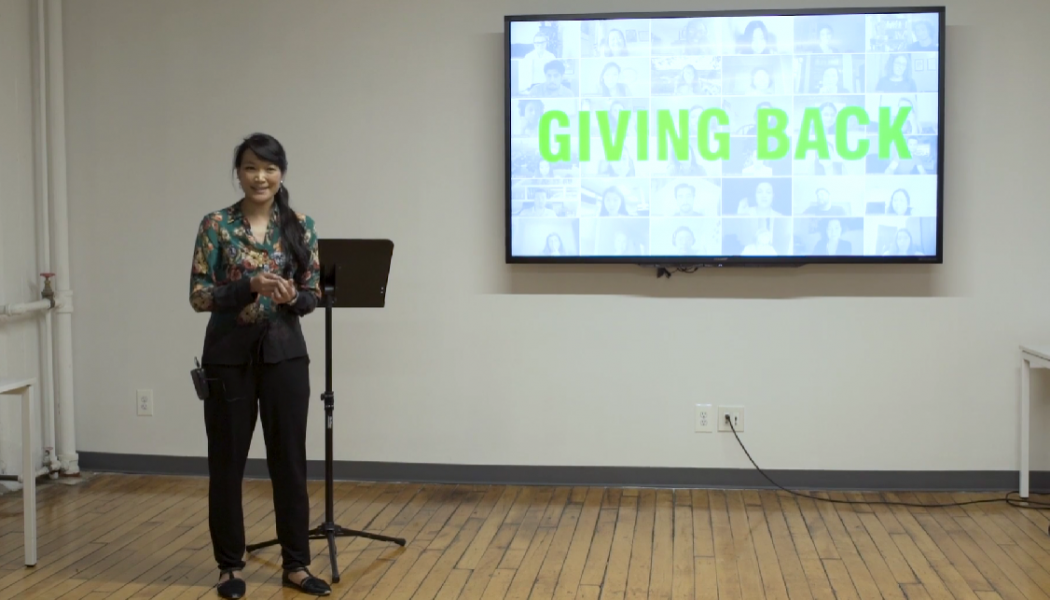

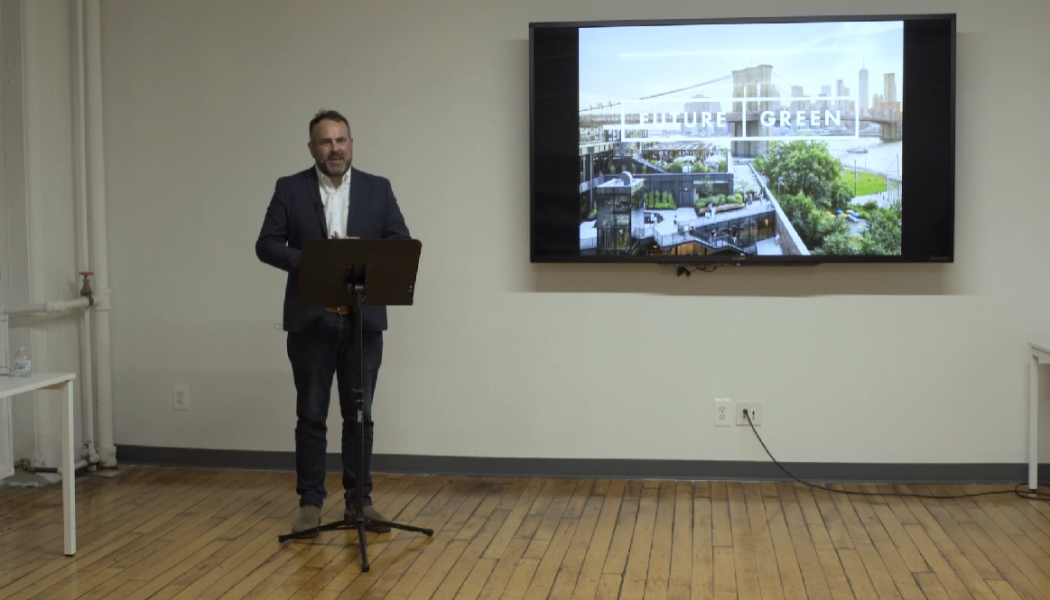

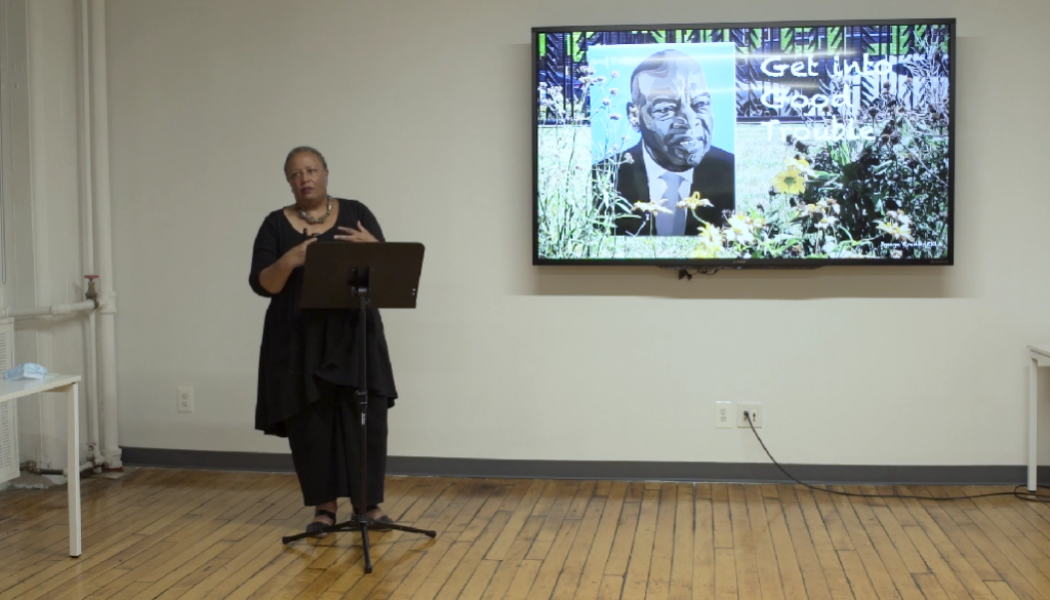

![Fill for Habitat [Video]](https://land8.com/wp-content/uploads/2022/07/land8-cover-1050x600.png)
![Fill for Habitat [Video]](https://land8.com/wp-content/uploads/2022/07/land8-cover-80x80.png)
